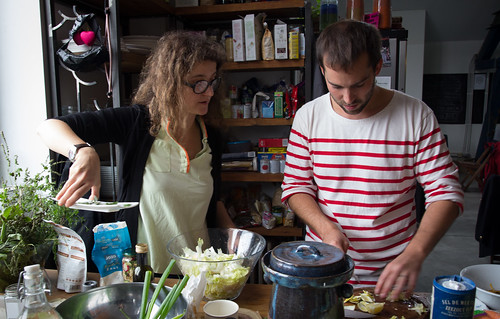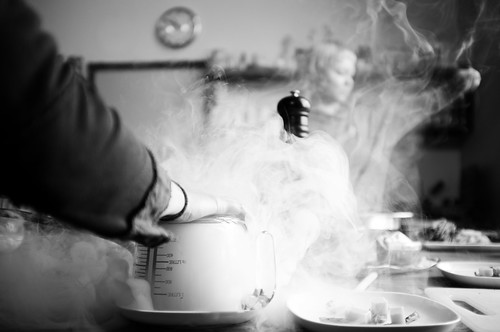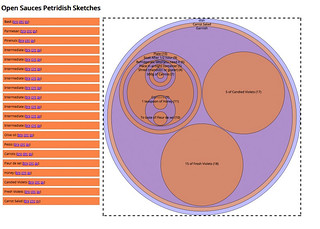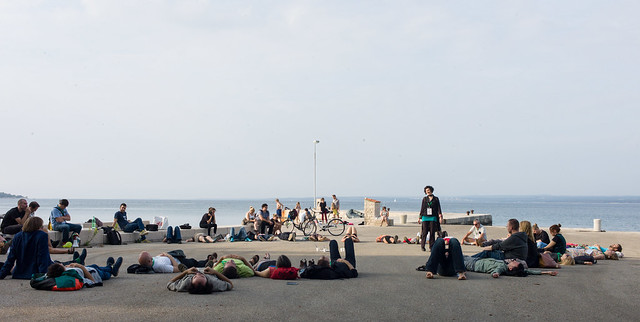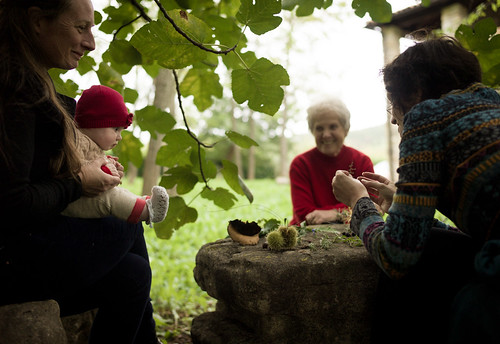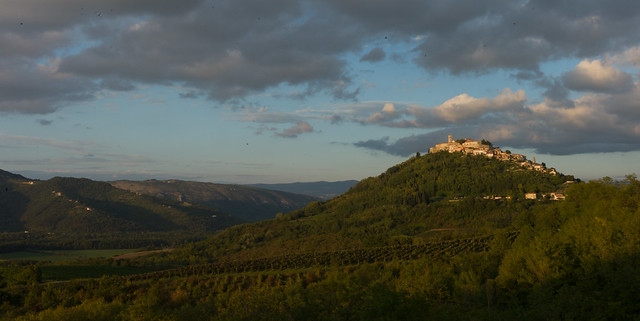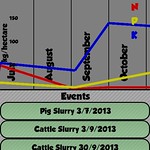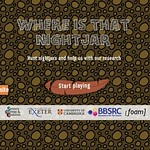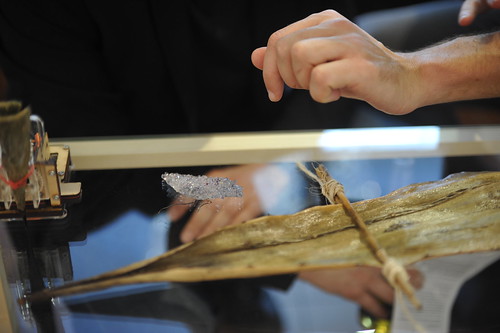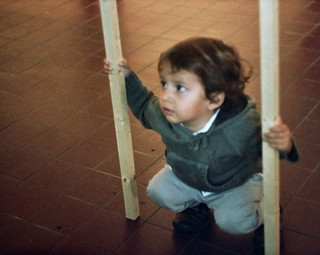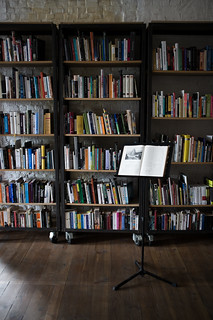Table of Contents
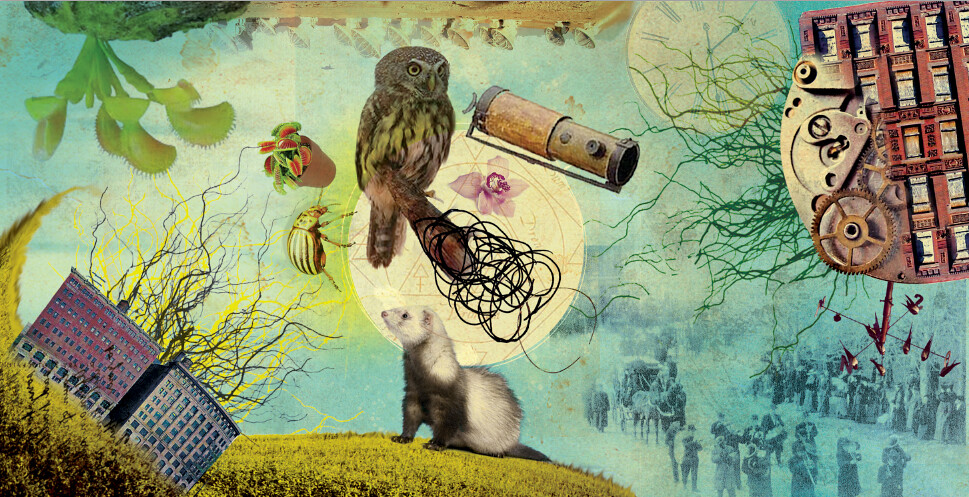
Winter Newsletter 2013
While we contemplate slowing down and revaluing silence as the northern hemisphere descends into wintry hibernation, it's time look back on FoAM's bustling activities over the last months as well as look forward to what the new year brings. Travels, talks, workshops, celebrations, residencies (punctuated by copious EC reporting and accounting) – there’s been much interesting ferment (and fermentation). Some things are simmering down, more is bubbling up, and there's much that is quite new to all of us. At FoAM Brussels we continue to deepen and broaden our investigations in food and speculative culture. FoAM Kernow has found its niche in blending science, technology and the arts, thereby benefiting both the scientific community and wider society. FoAM Amsterdam is touring the world with Sphaerae, and FoAM Nordica consolidates its work on Foodprints. So without further ado, here’s a guided tour of the highlights. We hope you’ll be inspired, and be in touch!
Food culture
A colourful congregation of artists, scientists, technologists and enthusiasts came together at FoAM in Brussels to explore the fuzzy edges between the craft of fermentation, the science of biochemistry and the interesting socio-technological developments surrounding the phenomenon known as bio-hacking, biopunk or DIY biology in the Biochymickal Arts workshop this September. Led by Maria Tarantino, Meredith L. Patterson, Brian Degger and the core team of FoAM Brussels, the group spent a weekend engaged in charged debate about such issues as the ethics of synthetic biology, biomimicry in design, fermented fish, and bacterial cultures in pickled vegetables. The workshop adopted the form of a curated open space, with several parallel experiments taking place in FoAM's kitchen and makeshift wetlab. The wetlab will remain operational until further notice, as several of the participants continue to perform biological experiments. If you are interested in using the lab, feel free to contact bxl@fo.am for more information. See also the notes, summaries and references emerging from the workshop, and the Biochymickal Arts photos on Flickr.
After weeks of planning, preparation, testing, tasting, listening and above all cooking, we hosted Smoke & Vapour, two etherial evenings and degustation dinners dedicated to smoke and vapour in their many forms. Maja Kuzmanovic, Stevie Wishart, Rasa Alksnyte, Nik Gaffney and Alkan Chipperfield composed a synaesthetic experience where food and sound melted and evaporated into one other. On the first evening we invited guests from within the FoAM network who gave us feedback about the experience, based on which we tweaked various aspects of the dinner. Two days afterwards we hosted the wider public event, with visitors ranging from civil servants to food stylists, performance artists to food activists. We’re happy that both evenings were well received by our guests, and also gave us such exhilarating pleasure to produce and perform. You can find an 'insider's perspective' of Smoke & Vapour's creation in Maja’s blog post, browse the documentation of the process, inspirations, and specially designed recipes, and peruse the photos spanning the entire production.
Nik Gaffney and Dave Griffiths are currently working on the Open Sauces website, where these and other of FoAM's recipes and food-related information will migrate in 2014.
FoAM Nordica’s Foodprints publication by Anna Maria Orru, Johan Zetterquist and David Relan has made it onto printed paper, and looks great. Examining the role of food in urban renewal, it represents the nourishing culmination of many projects, people, networks and ideas in the field. Meanwhile, a prototype app and website of the Foodprints Ruler is in the making. Anna Maria talked about it recently at the Switched on nature event at Shift in the Stockholm Resilience centre, where they've been hacking the space between nature and technology on themes of resilience.
Speculative culture
In our previous newsletter we celebrated the closure of Resilients and PARN, two projects that put our work in speculative culture on the map. Since then the PARN publication has been printed and distributed (if you'd like a copy email us at bxl@fo.am), and we're full swing into Future Fabulators, a European project that combines our work with alternate reality narratives and future preparedness and continues our fertile collaboration with Time's Up in Linz. In Future Fabulators we're extending our research in speculative culture through scenario building, future preenactments, physical narratives and other forms that embody possible futures today. Since commencing the project in September, we've facilitated several scenario planning workshops, fine-tuning the method for different audiences. From a small team at the Vooruit to the partners of the European Consortium and a diverse group of experts working on exotic and invasive species, we have applied our scenario building techniques in a wide range contexts. Although we're still developing the methods as we go along, we're convinced that they have a lot of potential for communities and organisations in transition. We are currently designing a series of scenario workshops with the Madeira Institute of Technology, after which we'll take a couple of months off to research the philosophy, ethics, aesthetics and methodology of speculative culture. Keep your eyes on the Future Fabulators wiki to find out more as the project develops.
To (re)connect with audiences interested in futurology and other forms of speculative culture, we spoke about our work at the Improving Realities conference in Brighton. Amidst futurists like Scott Smith, Justin Pickard and the people from ARC, Maja's talk looked at using future preenactments and alternate realities as ways to guide us through the swarm of uncertain futures. Following this Nik and Maja headed off to the Brionian islands in Croatia for the Summit of Practical Utopias, a four-day workshop where participants playfully designed and experimented with the seemingly paradoxical notion of creating a utopia that can be practical. We realised that FoAM might actually be an exercise of practical utopianism, balancing on the fine edges of the impractical.
A few days afterwards, Maja and Nik welcomed the Australian artist Sarah Neville and her five-month-old daughter Florence as family in residence at Castelletto Parenzana, FoAM's temporary residence in Istria, Croatia. The four of them spent an intensive week exploring the past, present and future of weather lore in a time of turbulent climate change. Our collaboration with Sarah will continue at our mobile studio in Adelaide, Australia during February 2014, and may involve Sarah's return to Europe to participate in one of Future Fabulators' events. Read more in Sarah's research report and the Parenzana residency notes.
Live coding and citizen science
FoAM Kernow has been investigating the future of live coding, working on citizen science games and apps with a number of new collaborators. Highlights include: the release of The Farm Crap App with Cornwall’s Duchy College, part of a scheme to highlight the value of organic fertilisers compared to costly and unsustainable synthetic ones, and Where Is that Nest? – a citizen science game measuring egg pattern camouflage, developed in collaboration with the Sensory Ecology group at Exeter University. It is a followup to Where is that Nightjar?, which has been played over 10,000 times.
In September Dave Griffiths attended Collaboration and learning through live coding, a seminar in Schloss Dagstuhl that explored live coding with experts in the fields of education and software engineering, leading to some exciting new collaborations (watch this space). He has also co-authored a new publication featured in the Ecology and Evolution Journal: Smartphones in ecology and evolution: a guide for the app-rehensive. It includes discussions of the http://fo.am/doris/|DORIS lobster mapper, Boskoi and Ushahidi.
And finally, CodeClub at Troon Primary School broke up for the holidays last week by making lots of Christmas games. Next year we're moving on to Raspberry Pi thanks to a donation from a rather large internet advertising company!
There and back again
Sphaerae is a portable multidome performance space designed by Cocky Eek of FoAM Amsterdam. It recently travelled to Linz, where it was featured at this year's Ars Electronica festival, hosting a diverse program of performances and compositions. Subsequently, the inflatable was set up in the city hall of The Hague for the TodaysArt festival, attracting huge crowds of Hagenezen (locals) intrigued by the strange large object emitting weird sounds. Future plans for Sphaerae include performances in South America and other continents, in association with Synergetica Lab and ArtScience Interfaculty. For more info see the Sphaerae blog.

Meanwhile, Theun Karelse has been traversing the Iberian peninsula on a foldable bike for the second instalment of Default, which is focusing on the Shifting Baseline syndrome. Some of the biotic samples taken from the expedition were transplanted to the Neringa peninsula in Lithuania during Theun's residency at the Nida Art Colony, as a demonstration of assisted migration.
Intercontinental exchanges involving FoAM Brussels focused this autumn on the Euroaxacan Initiative of Transformative Cultures, in which European and Mexican artists spent two years working in urban and rural areas of Oaxaca, Mexico, as well as in Belgium, Sweden and the UK, combining traditional crafts with new technologies. The early beginnings of this project were seeded at a FoAM workshop in 2009, and this October the project 'came home' to Brussels for Fiesta del EITC: The Homecoming, where we celebrated the project's closure. nadine and FoAM hosted the event and the subsequent consortium meeting under the gentle co-ordinating hand of Performing Pictures from Sweden. Designed and produced by Christina Stadlbauer, Loes Jacobs, Bart Vandeput, Pacome Beru and others, it was an opportunity for widely dispersed collaborators to reunite and harvest insights and some of the more tangible results of project, such as Bart and Christina's agave-inspired artworks developed with the glass artist Christian Thornton. We saw old friends like Dougald Hine, Geska and Robert Brecevic, as well as a few of the other project partners for the first time. Aside from the exhibition, which displayed several of the multidisciplinary artworks emerging from the project, the event featured presentations by participating artists and a screening of Dougald's movie Memories of Development, which featured him and Gustavo Esteva in conversation.
Leading up to the EITC closing event, two Mexican artists – Daniela Porras and Luis Canseco, together with their child Dante – spent a month at FoAM as family in residence, working with elements of Oaxacan and European culture to create their playful pieces for the exhibition. Luis shared an old machete – a family heirloom – to create a piece of participatory 'action drawing', while Daniela hand-painted coasters as a memory game of things that surprised, delighted and puzzled her about her experiences in Belgium and Oaxaca. As they were departing with teary eyes, they made us promise to come to Oaxaca after the project ends, and maybe even set up a FoAM studio in their home…
Hosting and sharing
One of the pillars of our work at FoAM Brussels is the facilitation and support of a wider community of generalists – the transdisciplinary and speculative cultural proletariat. We call this work our services to the cultural sector and beyond. In the spirit of sharing resources, skills and knowledge, we keep a library, offer coaching and mentoring, host residencies and much more. A new service that we started in June 2013 is Hosting Craft, a series of tutorials where we train a group of cultural workers in facilitating co-creation and group processes, using techniques gleaned from other sectors and developed ourselves in FoAM's workshops, masterclasses and retreats. We're currently experimenting with the format of the tutorials, and might open them up to wider groups in coming years.
We're delighted to let you know that the digital catalogue of our physical library is now online. Alkan has been cataloguing the publications and sorting them on the shelves, so it is now much easier to find what you're looking for in our humble but exciting collection of more than thousand books, magazines, grey literature and other ephemera informing and emerging from FoAM's activities. From 2014 we're planning to hold Open Library Days and Salons, giving not just our audiences but also ourselves a chance to enjoy reading and sharing our love of books and the written word. If you're interested to peruse the library, email us at bxl@fo.am for an appointment.
Soon after the library was catalogued, one of our families in residence used it in the most creative manner. Lies Declerck and her two-year-old son Adriaan spent a week at FoAM cooking from recipes found in FoAM's food-related books. This was one of the most unique and generous residencies we have ever experienced. Lies experimented with the bleeding edge between work and life, art and housework and took care of FoAM and our guests for a week. In exchange we looked after Adi and involved both of them in the daily life of the lab.
Aside from short-form residencies, the library is being used extensively by our two current macrotransients, Luea Ritter and Michka Mélo. Luea is working on how to facilitate transitions on personal, organisational and even societal scales, while Michka (having just started a few weeks ago) has wallpapered a loft in Post-Its outlining plans to disentangle from a scientific career and explore the boundaries between self-sufficiency and interdependence. Their transiencies will continue well into 2014, so you can expect further updates in coming newsletters. Both Luea and Michka are supported through FoAM's coaching programme, lead by executive coach and FoAM board member Vali Lalioti. There are still a few places left in 2014 for artists and other creatives in Flanders and Brussels who feel the need for coaching, so if you're interested, drop us an email at bxl@fo.am.
Finally – you might laugh after reading all of the above – we are working hard on a new field of study at FoAM: Doing Nothing. In view of the malaise fuelled by stress, overwork, financial and social uncertainty and other well-known pain points pervading the cultural sector (though also the wider society of Europe and beyond), FoAM has initiated a practice-based research programme on how to do nothing: creating space and time to decompress amidst our hectic lives. So far the research has looked at how to do this on a daily basis at a microcosmic scale, in FoAM itself, but in 2014–2015 the programme will be extended. In the spirit of Doing Nothing, we may not document it explicitly or extensively, but we do encourage you to browse some of the exercises and inspirations that have begun to amass on the project's dedicated Libarynth page.

To conclude this newsletter, we'd like to wish you a wonderful Yuletide and a beautiful 2014, with much space for speculation, experimentation, good food, fun and games. But above all else we wish you plentiful time to do nothing and enjoy the abundance of life, whatever it may bring. Looking forward to seeing you on the other side of the holidays, in person or online…


